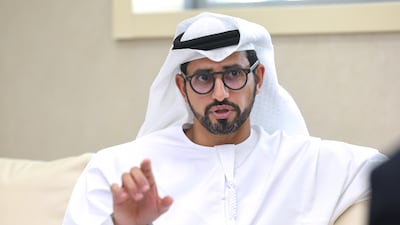Abu Dhabi will be updating the rental index every quarter as well as provide rental values of individual buildings in the future as it aims to promote transparency and attract more investment in the real estate sector, according to a senior official at Abu Dhabi Real Estate Centre (Adrec).
Last month, Abu Dhabi launched the emirate’s first residential rental index, aimed at providing indicative rental values in different areas of the emirate.
The rental index, which is available online at the real estate centre’s website, highlights rental rates for apartments and villas in Abu Dhabi City, Al Dhafra and Al Ain.
“Today, the rental index gives you an accurate, precise rental average based on a sector in the emirate of Abu Dhabi that’s based on transacted [Tawtheeq] contracts,” Rashed Al Omaira, acting director general of Adrec, told The National.
“Our next step in the rental index is basically zooming into specific residential buildings. So, we look at stand-alone building by building rather than sector by sector, giving more accurate readings into the rental index,” Mr Al Omaira said.
As part of the strategy, it aims to look at providing rental values in major landmark residential buildings in the capital. Adrec, however, did not reveal when it plans to launch the new initiative.
The centre was set up last year to regulate the real estate market in the emirate and promote the sector with new strategies.
“Our job is to make sure that it’s a transparent market where consumers and partners have access to information from the real estate sector, and we leave those prices to be dictated based on supply and demand,” Mr Al Omaira said.
Currently, as per Abu Dhabi law, a landlord cannot increase rent beyond 5 per cent when a contract is renewed with the tenant every year.
However, if there is a dispute between the landlord and tenant, residents can contact Adrec’s call centre or approach its office to resolve the issue.
Our doors are “wide open for the public to visit us and raise any inquiries that they have, plus also they can reach us by our digital channels”, Mr Al Omaira said.
Abu Dhabi property market
The UAE’s property market continues to rebound strongly from the coronavirus pandemic on the back of government initiatives such as residency permits for those who have retired and remote workers and growth in the non-oil economy.
In the second quarter, Abu Dhabi’s average apartment prices registered a year-on year increase of 6.2 per cent and average villa prices grew by 3.9 per cent, according to CBRE.
Average apartment prices reached Dh13,405 ($3,650) per square metre, and average villa prices Dh12,070 per square metre.
Rental prices also jumped during the period, with apartment prices rising by 6.6 per cent and average villa rents by 2.5 per cent during the quarter, the report said. Average annual apartment and villa rents in Abu Dhabi stood at Dh66,375 and Dh166,261, respectively.
“Abu Dhabi [is a] very promising property market,” Mr Al Omaira said.
“There’s a lot of demand. We’ve recently announced that year-on-year growth for foreign direct investment has exceeded 200 per cent,” he said.
As per Adrec’s latest data, 971 individual investors from 75 countries including the US, the UK, China, Russia and Kazakhstan have bought property worth Dh3.28 billion in the emirate during the first half of 2024.
Overall, the emirate recorded 12,439 property transactions valued at Dh36.2 billion for the six-month period, with Dh23.7 billion worth of sales and purchase deals and Dh12.5 billion comprising mortgage transactions.
Residential supply in Abu Dhabi
About 1,800 new residential units are expected to hit the market until the first quarter of next year in Yas Island, Saadiyat and Al Reem islands amid continued demand for property, Mr Al Omaira said.
He added that they “carefully monitor” the supply situation, taking into consideration the population growth and roll out of new projects and previously approved projects “to make sure that we’re in an occupancy rate that’s maintained at a healthy delta in the real estate cycle”.
“When required, we can control a bit of the supply of stock and accordingly, mitigate a bit of the risk that might happen from a potentially oversupplied market. But currently, today, we’re in a very optimistic market.”
The occupancy rate for Abu Dhabi residential buildings currently is between 85 per cent and 90 per cent, he added.
The latest data comes as developers continue to launch new projects amid higher demand for property.
On Wednesday, Aldar Properties, Abu Dhabi’s biggest listed developer, unveiled a new project on Yas Island named Yas Riva, with 151 four, five and six-bedroom canal-front villas available.
This follows another project announced by Aldar in July in the Saadiyat cultural district. It is developing 281 apartments and sky villas as part of The Arthouse residential community in Saadiyat Island.
This week, Abu Dhabi’s Bloom Holding also announced that it has begun the handover process of units in Cordoba, the first phase of the Bloom Living project in Abu Dhabi ahead of its delivery schedule in December.
Built over an area of 2.2 million square metres, Bloom Living near Abu Dhabi International Airport features more than 4,500 homes including villas, town houses and apartments.
“Abu Dhabi being an easy city to set up business and do business … all of these play a key role in positioning Abu Dhabi on the global footprint for potential investment and increasing the demand projections into the real estate sector,” Mr Al Omaira said.

